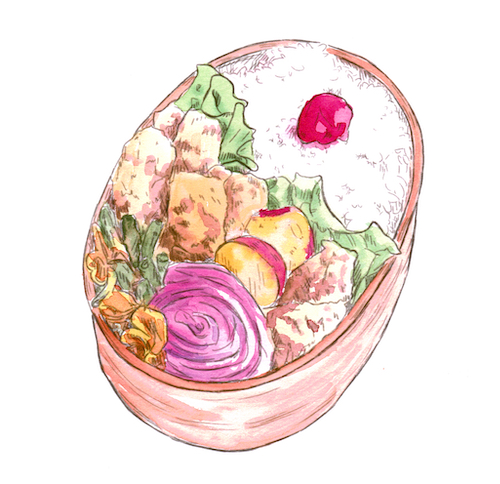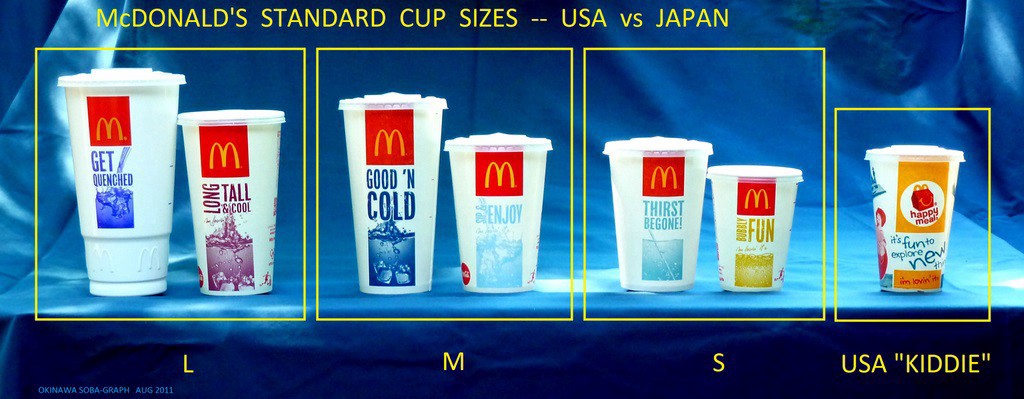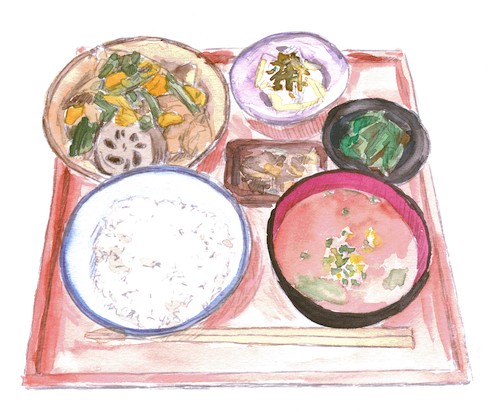
Visit a McDonald’s in Japan and you’ll understand why
Whenever I talk to someone who has visited Japan, an ex-pat who has lived there or a tourist just passing by, they will more often than not mention something about the fast-food chains there.
“If they tried to pull the same stunt in the United States, there would literally be riots.”
“But again, the United States can probably learn something from Japan. It would explain why Japanese people have a much easier time staying lean.”
What may surprise you is that we are not talking about different menu options at Japanese fast food chains compared to American ones — we are talking about the portion sizes.

Photo: Okinawa Soba (Rob) via Flickr/CC BY-NC-SA 2.0
What makes food in Japan healthier than in the United States
It’s a running joke in my family how a small size beverage at a McDonald’s in the United States is the large size at a McDonald’s in Japan, but this statement holds a lot of truth.
It’s not just size at McDonald’s, but other fast-food chains and restaurants. Starbucks has a special “short” size in Japan, which is only 8 oz. (240 ml). The smallest Domino’s pizza in Japan comes in a size “M,” a 9-inch diameter (23 cm), whereas the smallest size, “small,” in the U.S. is 10 inches. If you visit a restaurant in Japan, the meals are portioned so you’re expected to comfortably finish it in one sitting, while in the United States, meals are often impossible to finish without a takeaway container at the end.
In this way, Japanese fast-food markets the same sizes as smaller portions. A “short” size for adults in Japan is the kid’s size in the United States, and what’s defined as “medium” in Japan is America’s “small.”
What makes a Japanese diet sustainable for the modern lifestyle is not that it eliminates fast food or refined sugars, but that it practices moderation. As a society, its citizens aren’t pressured to exercise extreme self-control or restrictions to eat healthily, but psychologically, Japanese nutrition education is formed around = values of balance. To neither overstuff nor feel deprived, healthy eating begins with choosing the right plate size.
Choosing the right plate size for eating at home
To bring these concepts of moderation into the home, and reshape our understanding of proper meal size, we first need to choose the right plate sizes. Traditional Japanese meals are modeled after the idea of ichiju-sansai, or “one soup, three sides,” where small plates are combined to compose one whole meal. A single serving of rice, miso soup, two small vegetable dishes, and a single-serving of a protein dish. In this way, smaller plates and varied plates naturally diversify the foods to eat and practice portion control.

Illustrations: Kaki Okumura
Of course, we need to consider individual needs: A grown man will have a different nutritional need than a young child. But to achieve the Goldilocks of food portions, consider these questions after you eat your meals:
- Do I feel stuffed or starved?
- Am I thirsty or hungry?
- How will I feel after another serving?
By being more conscious of how we feel after finishing what’s on our plate, we will begin to achieve what feels right at 80 percent full, or harahachi-bunme, a balance where you are neither overeating nor depriving yourself.

Japanese healthy eating, of course, includes principles of variety, lots of fruits and vegetables, and properly prepared grains and proteins, but at the base of it is a psychological tool that allows people to lead a sustainable and comfortable lifestyle. Japanese food education is not just about discipline and rules; it encourages incorporating the foods we enjoy in moderation. By choosing the right plate sizes, we can nudge ourselves to make better health decisions without even realizing it.

If you have any questions, comments, or seek further advice on how to adopt a sustainable and healthy eating style, email me at kokumura@kakikata.space 🌱 It’s my goal to help others achieve a balanced and comfortable lifestyle that’ll shape their health and change their life for the better.
Warm regards,
Kaki 😊